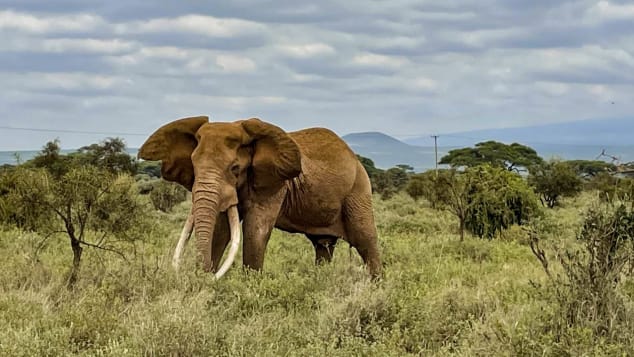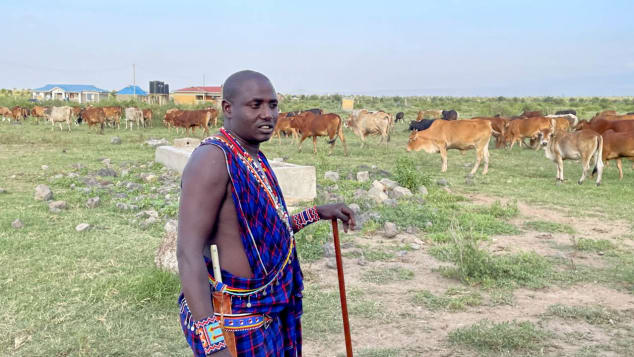CALL TO EARTH
begin quote from:
https://www.cnn.com/travel/article/kenya-wildlife-census-2021/index.html
Why Kenya is trying to count every single animal
Bethlehem Feleke, Saskya Vandoorne, Larry Madowo and Fabien Muhire, CNN • Updated 24th May 2021
FacebookTwitterEmail
00:40/03:05
Up next

Samantha Brown's packing tips
02:44

The wait is over for panda cub
01:10

Ancient baths hidden 2,000 years
01:01

Coral Gardening in Maldives
01:01

1,210 feet above NYC
01:02

Colombia's 'Superman' cyclist
01:00

Las Vegas lights up again
02:53

New supertall Christ statue
01:21

Phuket's tourism hopes
03:06

Make airline food at home
02:46
(CNN) — The wildlife researcher diligently marks his notepad as the elephants come into view, eager to not miss a single one in his count.
Meanwhile the pilot, flying high in a helicopter above Kenya's Amboseli park, circles around the herd to reveal a clearer view of the pack -- and an extremely rare set of twin baby elephants among them.
"The last time Kenya recorded elephant twins was 40 years ago," Najib Balala, Kenya's tourism minister, says over the crackly headphone set.
In the span of the pandemic, Kenya has seen a baby boom of over 200 elephants, or "Covid gifts" as Balala calls them.

Kenya has experienced an elephant baby boom during Covid.
Saskya Vandoorne
But although some animals have thrived in the less crowded parks during the pandemic, Covid-19 has had a devastating impact on conservation on the African continent and the millions of livelihoods which depend on ecotourism.
In March 2020, Kenya abruptly closed its border in an effort to curb the spread of the virus. The country's billion-dollar tourism industry came to a screeching halt, losing over 80% of revenue. It is not expected to recover until 2024, says Balala.
"Can tourism survive until 2024? We need to rethink and remodel our way of doing things so that we can survive until tourism rebounces," he tells CNN.

Conservationists are trying to count every single animal in Kenya.
Saskya Vandoorne
That question has triggered Kenya's most ambitious conservation effort yet: counting every single animal and marine life in all 58 national parks across the country for the first time ever.
The great wildlife census will be critical to understanding and protecting the more than 1,000 species which are native to Kenya, some of which have seen alarming population declines over the last few decades, according to scientists.

Conservationists are using GPS trackers, aircraft, camera traps and manpower to track animals.
Bethlehem Feleke
Using GPS trackers, aircraft, camera traps and significant manpower, Kenya's Wildlife Service (KWS) will count everything from the regal giraffe to the endearing cat-sized dik-dik over three months.
They will focus on rare species, including the pangolin -- often illegally traded-- the sitatunga antelope, aardvarks and hedgehogs, none of which have ever been counted before.
Shrinking habitats

The Masaai people have been badly hit by the drop in tourism.
Saskya Vandoorne
This level of unprecedented data will help Kenya better understand its wildlife and the various threats facing it today -- such as climate change, human-wildlife conflict and shrinking habitats amid the growing competition for land use.
For decades, the Maasai people have given up land for some of Kenya's most famous parks. Noah Lemaiyan -- a herdsman clad in a red and blue shawl -- lives on the outskirts of Amboseli. Since the tourists stopped coming, he says, the income for his village has dried up.
"Women used to make bracelets and necklaces," he says. "But now we have to sell one cow to buy food."

The natural habitat for many animals is dwindling in Kenya.
Saskya Vandoorne
Lemaiyan is also struggling with a shortage of water -- crucial to keep his herd alive.
Dr. Patrick Omondi, the acting director of biodiversity, research and planning at KWS, hopes the census will give them a better understanding of how erratic weather patterns are affecting the animals and have forced habitats to change.
Related content
Nairobi: The fastest city on the planet?"We will establish where these wildlife are in time and space," he says -- which will enable them to create a more robust management plan.
"We have seen wildlife going into spaces they have not been in 50 years," he adds.
By the end of July, Omondi and his hundreds-strong team will have scoured every bit of Kenya's rolling landscapes by air and on land, and have surveyed every lake and marine park by boat and underwater.
And with the census complete, the work can begin.
No comments:
Post a Comment